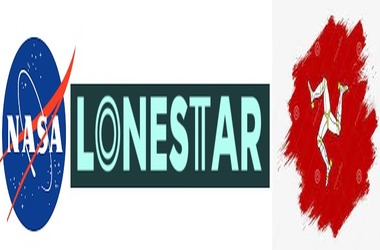
NASA’s Lunar Data Storage Experiment
NASA, in partnership with Lonestar and the Isle of Man, is set to send a payload filled with data to the moon within the coming year, marking a pivotal step in the Artemis program. The mission’s primary objective is to explore the feasibility of lunar-based backup storage. The collaborators are confident that blockchain technology will ensure the security of data and protect it from unauthorized alterations, substantiating the authenticity of the stored information.
Blockchain’s Lunar Debut
This mission represents the first instance of blockchain technology being employed on the moon. Blockchain, primarily known for underpinning cryptocurrencies, is being repurposed as a secure means of storing vital data. Archive specialist Archangel has previously explored similar applications of blockchain technology on Earth, but this endeavor takes it beyond our planet’s boundaries.
Securing Lunar Data
Scheduled for launch from US soil in February 2024, the data cube will land on the moon, where it will undergo digital “franking” at Lonestar’s data center to validate its origin on the lunar surface. Subsequently, the data will be transmitted back to Earth, where it will be compiled into a blockchain, affirming its authenticity.
A Collaborative Effort with Unusual Allies
Kurt Roosen, Head of Innovation at Digital Isle of Man, expressed his enthusiasm about the mission’s challenges and the need to counter skepticism about moon missions. The Isle of Man’s post office is playing a unique role in this initiative by selecting stamps to serve as test data, which will be digitized and sent to the moon. These stamps feature the next individual slated to set foot on the lunar surface, with hopes of obtaining King Charles’ authorization for their use.
Protecting Humanity’s Most Vital Discoveries
The importance of lunar data centers becomes evident when considering the potential threats to Earth, such as climate change or an uninhabitable planet. Kurt Roosen emphasizes that throughout history, entire bodies of knowledge and cultures have been lost. In today’s digital age, safeguarding data against such catastrophic events has become imperative, and the moon emerges as a viable solution.
Skepticism and Challenges
Despite the ambitious endeavor, skeptics like Prof. Peter Bentley of University College London point out alternative options available on Earth that do not require the complexities of lunar storage. Bentley highlights the potential difficulties, higher costs, and vulnerability of lunar equipment to extreme conditions. He contends that similar conditions can be replicated on Earth, albeit more easily and cost-effectively.
The Lunar Data Cubes
The lunar data cubes, despite their name, can assume various shapes. The forthcoming mission will deploy a black rectangular data cube approximately the size of a book, capable of storing a terabyte of data. These self-sufficient units, powered by solar energy, equipped with basic processing capabilities, and solid-state drives, do not require resource-intensive cooling technology, potentially making them more environmentally friendly than terrestrial data storage solutions.
Protection Against Hacking and AI Threats
Roosen emphasizes that the simplicity of the lunar data cubes plays a vital role in protecting them from hacking and artificial intelligence threats. Since these units do not connect to the internet, potential hackers would need to breach the point-to-point protocol, which reduces the vulnerability associated with a smaller communication network.
The Issue of Data Security
While Roosen remains optimistic about civilian tampering being a distant concern, Bentley underscores the universal risks of data breaches and hacking, emphasizing that data security should be a priority, whether on Earth or the moon. Protecting data from such threats, even on the moon, is paramount.
Future Possibilities
In the future, lunar data centers may store sensitive national data, including cultural information, financial records, and genomics data for pharmaceutical research. Such data demands robust legislative protection, especially when it is under the jurisdiction of different countries.
A Unique Legal Perspective
Inspired by ship registers and satellite jurisdictions, this initiative effectively extends legal jurisdiction from Earth to the moon. When NASA’s satellite touches down, it will establish a legal extension of the Isle of Man on the lunar surface.
Conclusion
The collaboration between NASA, Lonestar, and the Isle of Man to utilize blockchain technology for lunar data storage represents a pioneering leap in securing humanity’s most critical information. While challenges and skepticism persist, this ambitious venture underscores the importance of safeguarding our knowledge and heritage for the future, even beyond the confines of Earth.